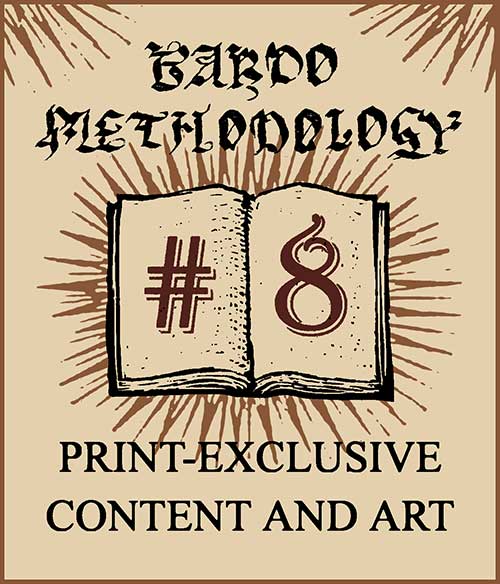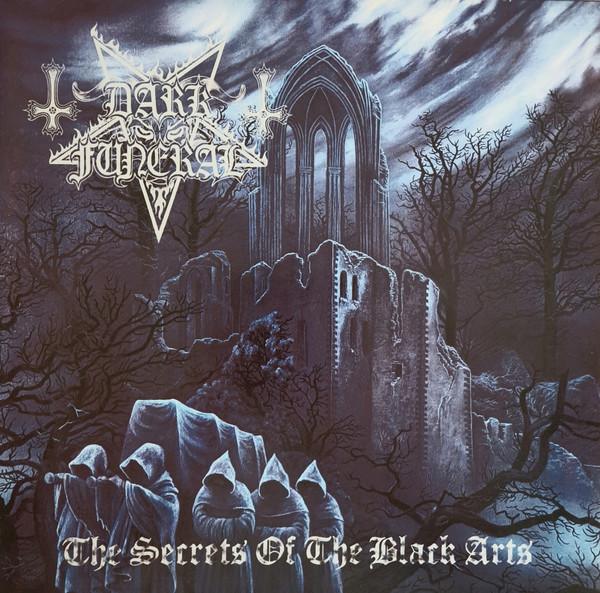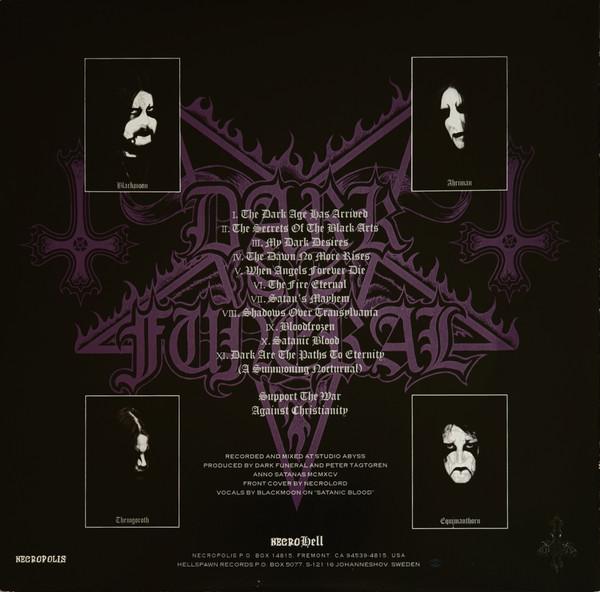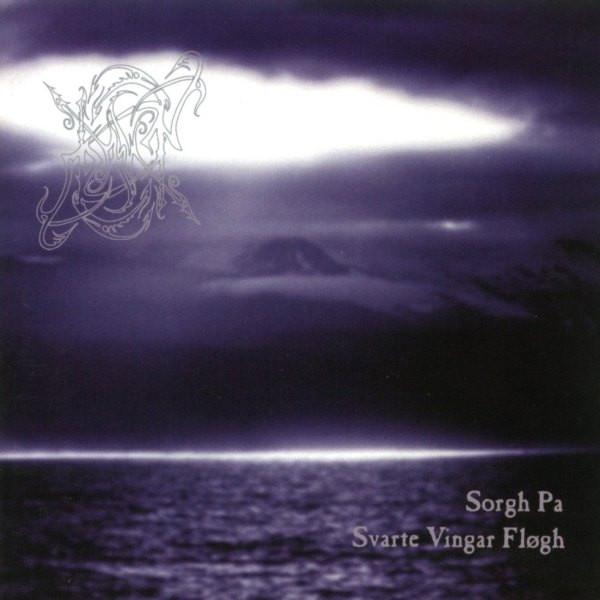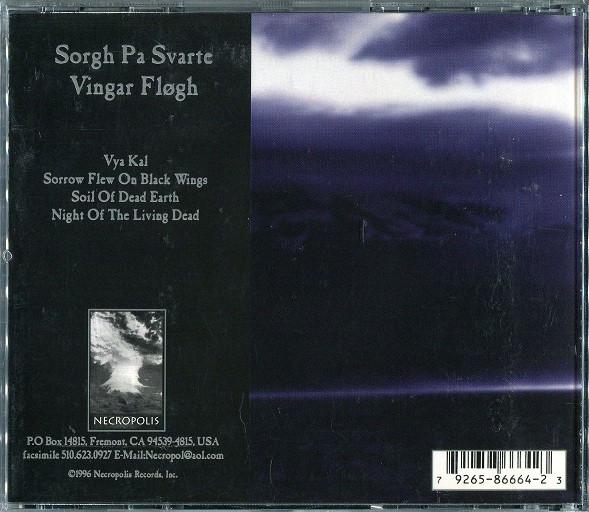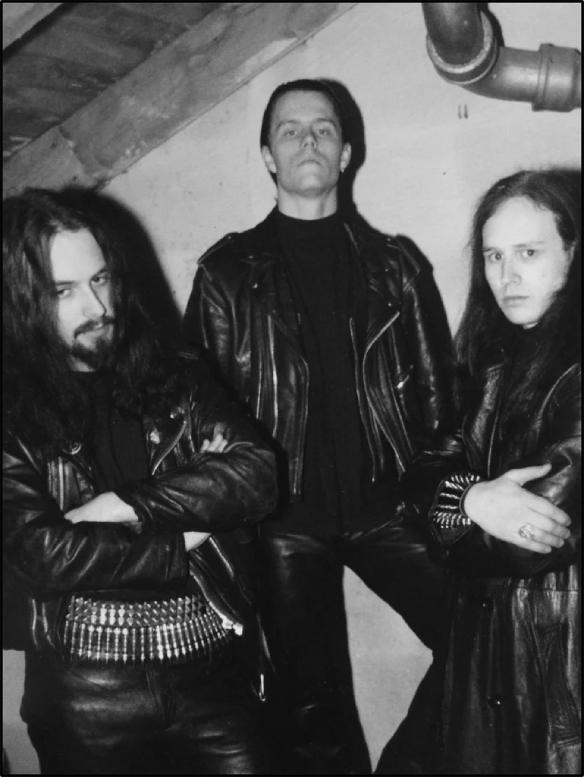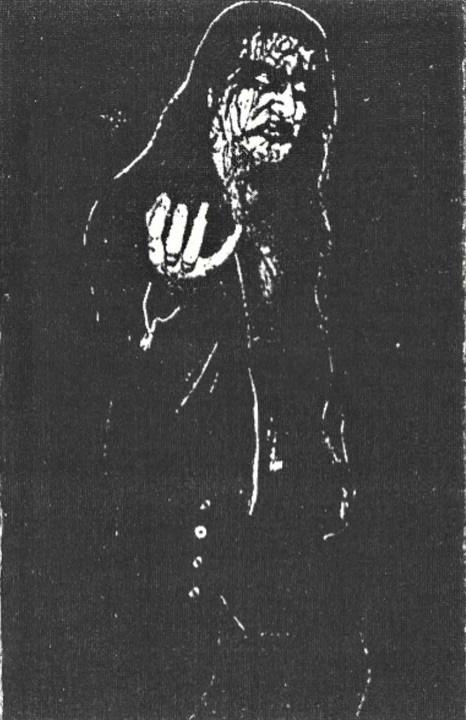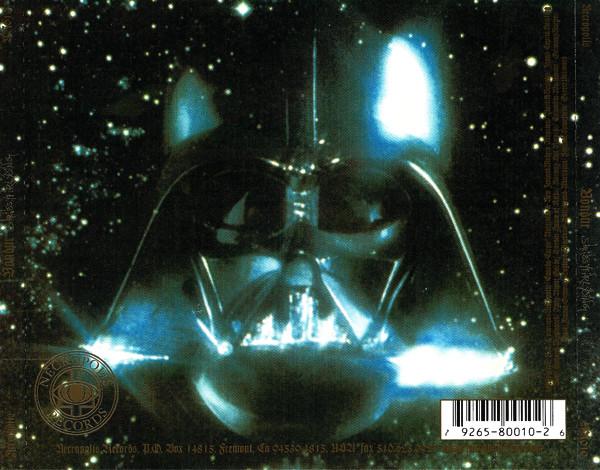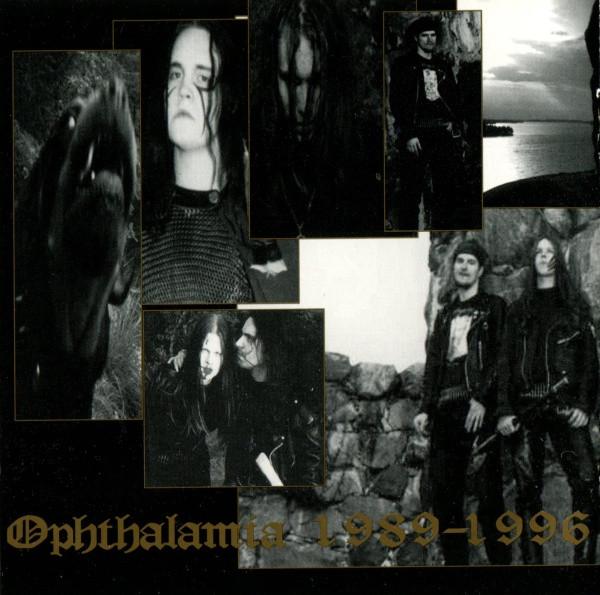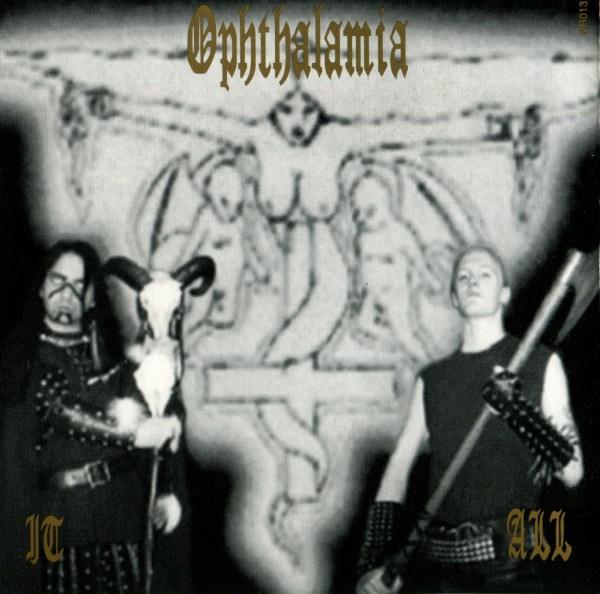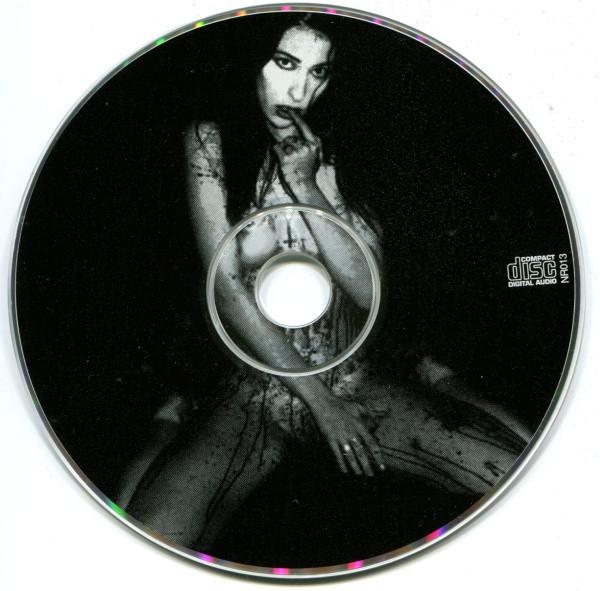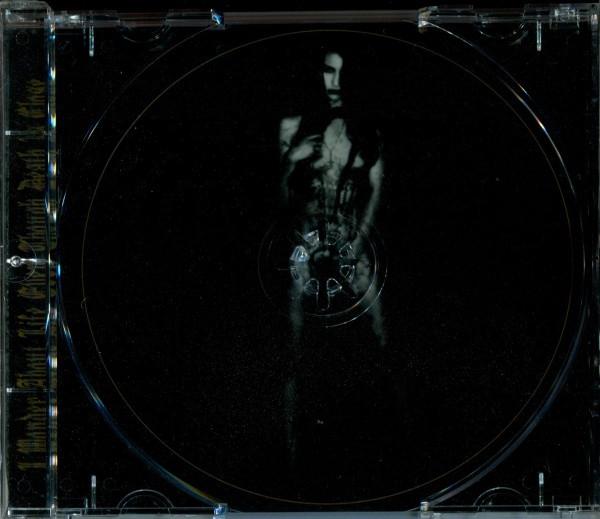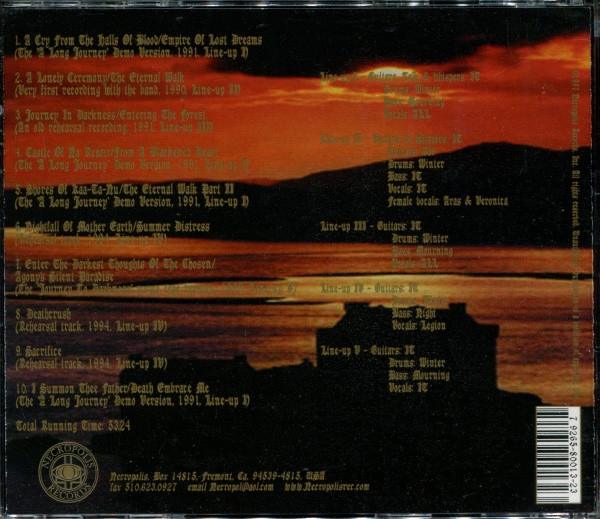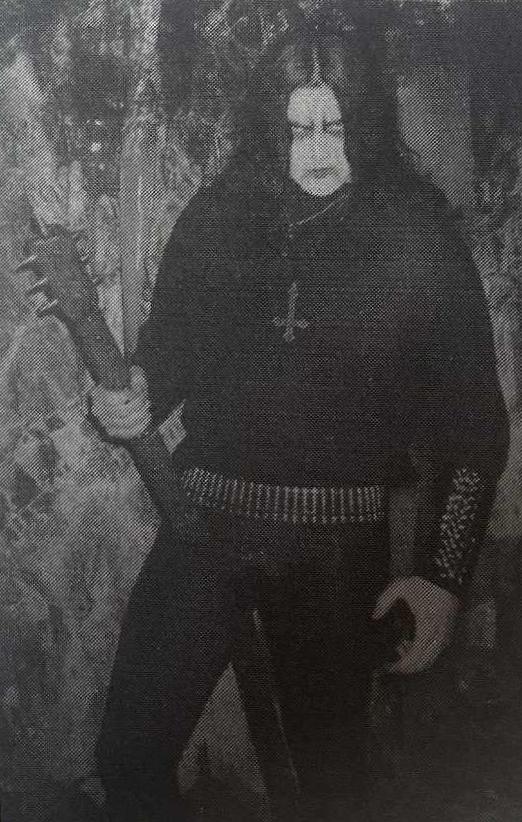Necropolis Records V
2025-10-29
by Niklas Göransson
By 1996, Necropolis had outgrown its sanctum. What once relied on letters and instinct now demanded staff, infrastructure, and a warehouse. The label entered an era of transformation as black metal fervour merged with the dawning digital age.
PAUL TYPHON: “Nordic Metal…” – while huge for Necropolis – marked a turning point. I’d started questioning the sincerity behind certain scenes and focusing more on quality. Rather than deliberating who was ‘true’ or not, I asked myself, ‘What makes a release worthwhile? How do we sustain momentum?’
For its first few years, Necropolis Records operated out of Paul’s parents’ house in Fremont, California. By 1996, the label had taken on employees and established a dedicated headquarters – occupying the former rehearsal studio of American rapper M.C. Hammer.
PAUL: My friend Corey Rodrigues helped me pack orders while I was still running Necropolis out of a garage. Eventually, I rented this small warehouse and brought in Jon Korpse – not exactly a black metal devotee, but an old-school metalhead. Then Joker came aboard.
Joker Lokison, editor of black metal fanzine Goats of Pandemonium, had previously worked for Relapse Records. As a freelance writer at Pit Magazine, he first contacted Paul to arrange interviews with Necropolis bands.
PAUL: Joker drove all the way from Michigan to San Francisco – more than two thousand miles (3,200 km) – with no job lined up. I said, ‘Sure, we’ll hire you.’ He didn’t even have a place to stay, so he slept in the warehouse for about a week until I told him, ‘You can’t live here, man.’
When Necropolis opened its office, the Bay Area had become a central hub of the new internet economy. Startups were multiplying across Silicon Valley as venture capital poured in, turning the region into a hot spot of e-commerce and digital innovation.
PAUL: Living in what was essentially the world’s tech capital, that mindset seeped into everything. Suddenly, we had customers showing up at the warehouse, and I’d ask, ‘How did you find us?’ They’d say, ‘Oh, you’re on Yahoo Maps.’ <laughs> ‘On what now?’ Things were changing – fast.
In early ’96, at a time when almost no black metal labels were online, Paul launched necropolisrec.com – the official website of Necropolis Records.
PAUL: The internet became part of my daily operations quite early. I had an IT guy, Jason, who set up our internal email network. He ran a hosting company and said, ‘Why not build a website so you can promote your releases online?’ So, we did – and it gave us a real head start.
Back in 1992, Paul invited Tomas Nyqvist of Swedish label No Fashion Records to join Necropolis’ US distribution deal with Pavement Music. Despite initial turbulence, this arrangement gave MARDUK’s “Dark Endless” and UNANIMATED’s “In the Forest of the Dreaming Dead” American retail exposure.
Nyqvist had sharp instincts for scouting talent, yet the label’s rapid growth soon outpaced its infrastructure. DISSECTION’s “The Somberlain” was meant to be next in the Necropolis partnership, but those plans collapsed when Nyqvist signed a contract with Swedish distributor House of Kicks – effectively transferring ownership of No Fashion.
Under new management, the restructured label issued several albums recorded during Nyqvist’s tenure, including KATATONIA’s “Dance of December Souls”, MERCILESS’ “Unbound”, and THRONE OF AHAZ’s “Nifelheim”.
PAUL: Honestly, it pissed me off. I kept telling them, ‘Hey, I’ve got the rights to press these albums in America.’ I had a contract signed by Tomas Nyqvist back when he still ran the label, making Necropolis the exclusive US licensee and distributor for No Fashion titles.
Hoping to replicate the success of Nyqvist’s acquisitions, the House of Kicks-run No Fashion signed a number of younger Swedish bands like MÖRK GRYNING, A CANOROUS QUINTET, ABLAZE MY SORROW, and VINTERLAND.
When DARK FUNERAL released their self-titled 1994 mini-CD through Hellspawn Records – the label run by guitarist Blackmoon – House of Kicks handled the distribution. After noticing its strong sales, they signed the band to No Fashion and released “The Secrets of the Black Arts” in January ‘96. The vinyl version appeared on NecroHell, a joint imprint between Necropolis and Hellspawn.
PAUL: Blackmoon had a strong presence in the band and often took charge of things. We went way back, so he basically told House of Kicks, ‘This is how it’s going to be’ – and they agreed. Honestly, it might’ve been part sympathy, part attempt to quiet me down; either way, that’s how we ended up pressing the DARK FUNERAL album.
PAUL: DAWN’s debut didn’t get immediate recognition. Eventually, people went back, listened, and realised it’s a great record – but at the time, the reception felt pretty subdued compared to what came later. Leading up to the EP, Andreas sent me some demo material, and I could tell everything was falling into place.
In 1996, a year after “Nær sólen gar niþer for evogher”, DAWN returned with the mini-CD “Sorgh på svarte vingar fløgh”.
PAUL: That EP had a more atmospheric feel; the intro alone set the tone perfectly, exactly how I’d always imagined DAWN’s sound. Even their INFERNAL MÄJESTY cover was beautifully done – another sign of how skilled and deliberate they were.
I must say, changing a band’s logo after their debut album is a bold move.
PAUL: To me, that’s how DAWN should’ve been presented from the start. I don’t think I ever poured as much money into another short release; we printed posters, and I told the CD plant to use the highest gloss possible on the booklets because I loved the imagery they’d provided.
Were you still being hounded by black metal purists?
PAUL: Definitely, but I’d stopped caring. My attitude was simple: I released whatever spoke to me. And by then, I’d gravitated toward strong musicianship and melancholy. I believed deeply in DAWN and their artistic vision. Fredrik wrote much of the material, and Henke played a major role too – both great guys.
PAUL: I’ve always been fascinated by the musician behind a band. There’s usually more creativity waiting to surface, and side-projects are where that energy finds an outlet; no pressure to tour, just the freedom to explore whatever is inside. I’d often approach artists I admired and ask if they had anything else in the works.
Around the same time as “Sorgh på svarte vingar fløgh”, DAWN vocalist Henke Forss co-founded NIDEN DIV. 187 – a black metal project featuring members of RETALIATION, THY PRIMORDIAL, and A CANOROUS QUINTET. They self-released a 1996 demo tape, “Towards Judgement”, which was then reissued on CD by Necropolis.
PAUL: In hindsight, I probably should’ve focused more on full-lengths – but whenever something hit me that hard, I wanted to release the music exactly as I heard it. From the first listen, I knew they had something special: razor-sharp guitars, feral vocals, relentless drumming, and pounding bass.
In contemporary promotional material, the band was presented as a militant, anti-PC ‘slab of pure hate’. Since no lyrics were included, it’s hard to pinpoint how those qualities manifested.
PAUL: I think that promo text was mainly trying to convey the overall abrasiveness of NIDEN. The ‘187’ reference – the US police code for murder – struck me as a cool, provocative touch. Lyrically, I imagine Henke drew more from grindcore influences, giving it that hybrid energy of black metal and grind/crust.
While “Towards Judgement” is strikingly fast and violent for a recording made in ‘95, it doesn’t really come across as grindcore – the closest comparison would probably be Norway’s ZYKLON B.
PAUL: For me, it was mainly the raw power and intensity that echoed grindcore. I’d started getting into the local crust scene – Denis from Atmosfear introduced me to PLUTOCRACY, CAPITALIST CASUALTIES, and similar bands, which gave a renewed perspective.
PAUL: The Swedish scene of the mid-to-late ‘90s stood apart. Many of the projects we worked with drew from that same current as the original black metal spirit. IT often talked about the True Satanist Horde; to me, those guys were among the few still carrying the flame lit by Euronymous.
IT founded the True Satanist Horde in 1991, soon recruiting members from DISSECTION, MARDUK, and other Swedish bands, with regular meetings taking place in his hometown of Finspång.
In July the following year, acting on instructions from BURZUM’s Varg Vikernes, a female member set fire to THERION frontman Christofer Johnsson’s parents’ house. A few months later, after a T.S.H. gathering at IT’s apartment, Angramain’yo of AZHUBHAM HAANI stabbed a random passer-by in the throat.
By the mid-1990s, IT lived in Stockholm, and the True Satanist Horde had begun to splinter – its activities largely confined to his local circle.
PAUL: Necropolis naturally aligned with groups rooted in early black metal philosophy. I never managed to sign ABRUPTUM or formally bring OPHTHALAMIA onto the label, but IT had several side-projects: VONDUR, RAVENWING, HOST, plus an ambient thing – all driven by that same creative spark.
IT founded VONDUR as a solo project, debuting with the 1994 demo “Uppruni vonsku”. The following year, he brought in All – vocalist of demo-era ABRUPTUM and OPHTHALAMIA – who’d just moved to Stockholm. The duo signed to Necropolis Records.
PAUL: I’d get stacks of demos from unknown bands, and most were awful <laughs>. Why sign untested acts when I could work with people who’d already proven themselves? If IT and All had a project, I assumed it would be something worthwhile. Those two together were unhinged in the best possible way; the chemistry felt just right.
In June 1996, Necropolis released VONDUR’s debut album, “Striðsyfirlýsing”, recorded in the living room of IT’s former BREJN DEDD bandmate Micke Bohlin.
I can only imagine Paul’s reaction upon receiving the material. While the VONDUR demo could be passed off as a strange but genuine black metal expression – something akin to the retarded cousin of ISENGARD – the album made no such pretence. With lyrics in mock-Icelandic, Star Wars references, yellow corpse paint, and a ludicrous drum machine, “Striðsyfirlýsing” pushed absurdity to its limits.
PAUL: Yep, nobody liked it <laughs>. But that attitude – IT’s imagery, his whole persona – embodied the purest ‘I want you to hate this’ mindset, which to me defines black metal. VONDUR also fit the label’s unwritten rule: every band needed a unique voice. At least they didn’t sound like anyone else.
Seeing as how IT had just spent several years issuing death threats to younger bands deemed not serious enough – a climate that undoubtedly helped shape the Swedish scene for the better – many locals found it baffling that he’d suddenly engage in outright parody.
PAUL: I know; most people absolutely despised it. And remember, by that point, I already had bands like DAWN on the label – serious musicians writing these sprawling, epic songs – and then suddenly I’m putting out VONDUR <laughs>. But the real mystery is how I never got a cease-and-desist from Lucasfilm.
I was just about to ask what on earth possessed you to agree to that cover.
PAUL: I have no idea, to be honest. I mean, just picture it: Darth Vader on the cover, sold in major record stores. I was running a legitimate business by then, all the while releasing something that could’ve easily gotten me sued – completely insane.
Following “Striðsyfirlýsing”, the two old friends expanded their collaboration. When Legion – who sang on OPHTHALAMIA’s 1995 masterpiece, “Via Dolorosa” – left to join MARDUK, All resumed his former position as vocalist.
OPHTHALAMIA had already signed with No Fashion for their next full-length, but in 1997, Necropolis released an anthology titled “To Elishia”.
PAUL: I’d say it was pretty well received, partly thanks to the layout <laughs>, which had the same kind of provocative imagery Mortiis used for VOND. I gave IT complete freedom – he chose the photos, designed the booklet, and shaped the artwork. I don’t recall now; was that his girlfriend?
No, it was the girlfriend of their new bass player, Mist.
PAUL: Right. “Via Dolorosa” had already been a landmark release, and I wanted to promote artists who carried that same spirit. “To Elishia” was a strong compilation – packed with previously unreleased tracks and liner notes by IT. As one of Necropolis’ earliest supporters, I wanted to make sure his work got the recognition it deserved.
PAUL: Obviously, not every Swedish band on Necropolis was a side-project, but certain musicians became the backbone. As long as we worked together, I felt the label would retain its identity as a haven for truly Satanic, evil, and dark music. So, when Blackmoon left DARK FUNERAL, I immediately signed him.
By late 1996, Blackmoon had parted ways with two bands he co-founded – DARK FUNERAL and NECROPHOBIC. In March the following year, Necropolis announced the upcoming album of his recently revived eponymous solo project.
PAUL: Giving respected musicians like Blackmoon room to realise their own vision often led to stronger, more authentic results. Solo projects tended to be outlets for ideas they couldn’t explore elsewhere, and the two demo tracks he sent me embodied everything I loved about that concept.
Three years earlier, Blackmoon – with help from DARK FUNERAL drummer Equimanthorn – had recorded “Arrival…” and “Across the Black Mountains” at Dan Swanö’s Unisound studio. The material was darker and slower than their main band, heavily inspired by two of Blackmoon’s core influences: BATHORY and VON.
PAUL: That demo perfectly matched what I wanted Necropolis to represent: a label rooted in the underground, dedicated to sinister and uncompromising music. I remember making a glossy flyer for the Blackmoon project using photos he sent. It also mentioned, if I recall correctly, something Morgan was working on.
Paul’s connection with MARDUK’s Morgan Håkansson dates back to 1993, when Necropolis licensed a US edition of “Dark Endless” from No Fashion. Håkansson would later prove pivotal to the “Nordic Metal: A Tribute to Euronymous” compilation.
PAUL: Morgan and I spoke on the phone often – real conversations, not just letters. He’s a strong-minded person, and I’ve always held the greatest respect for him. We shared a similar outlook and often discussed Satanism, as well as the different ways to express and spread the message.
A March 1997 news update on the Necropolis website announced Morgan Håkansson’s solo project, RAUGZ AUGA.
Like its moniker, meaning ‘The Red Eye’, Morgan’s Lord of the Rings-inspired band featured lyrics written in Tolkien’s Black Speech. A mini-CD titled “Blóðdaga” – ‘Blooddawn’, later adopted as the name for his label – was set to be recorded at Abyss Studio in the summer of ‘97.
log in to keep reading
The second half of this article is reserved for subscribers of the Bardo Methodology online archive. To keep reading, sign up or log in below.

